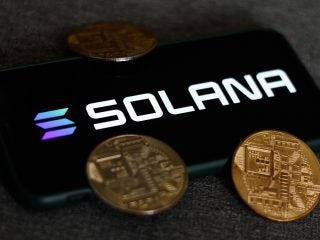Many people find it hard to understand why cryptocurrency prices change.
Tokenomics plays a big role in this. Our article will show you how tokenomics affects the of Notcoin price.
Keep reading to learn more!
Key Takeaways
- Tokenomics is key in determining the value of Notcoin by looking at token supply, market cap, and investment impacts.
- Factors like technical analysis, how people feel about Notcoin, its use and demand, rules for decision-making in its network, laws from governments, and new tech change Notcoin’s price.
- Understanding tokenomics helps investors make good choices by showing them how different things affect Notcoin’s worth.
Understanding Tokenomics
Understanding Tokenomics is crucial for grasping the economics and investment aspects of Notcoin. It encompasses token supply, market capitalization, and its significance in crypto investing.
Token supply
Token supply refers to the total number of tokens that exist or will exist for a cryptocurrency, such as Notcoin. This includes all coins already in circulation plus those available to be mined or released.
Tokenomics considers token supply crucial because it directly impacts the scarcity and value of the digital asset. For instance, a limited supply can make a token more desirable if demand rises, potentially increasing its price.
Understanding token supply is vital for evaluating Notcoin’s future value within the project ecosystem economics.
Different cryptos have different policies on their total token supply. Some have a hard cap, like Bitcoin’s 21 million limit, ensuring digital scarcity; others have no cap, which might lead to inflation if not managed properly through mechanisms like burning tokens.
The distribution strategy also plays into this: how are tokens allocated among developers, investors, and users? Efficient distribution ensures fair access and usage across the network.
Market capitalization
The market capitalization of a cryptocurrency is calculated by multiplying the total supply of tokens with the current price per token. It represents the total value of all tokens in circulation and is an important metric for evaluating a cryptocurrency’s size and stability in the market.
Market capitalization influences investment decisions, as it provides insight into a token’s popularity and potential for growth. For instance, Bitcoin has consistently maintained a high market capitalization due to its large circulating supply and demand, making it a prominent player in the crypto space.
Understanding market capitalization is crucial when assessing different cryptocurrencies’ viability for investment opportunities. In addition to being widely used as an indicator of overall cryptocurrency performance, it helps investors gauge the potential risk and reward associated with investing in specific digital assets.
Importance in crypto investing
Tokenomics plays a critical role in crypto investing. Understanding the token supply, market capitalization, and demand drivers helps investors make informed decisions. It shapes the value of a cryptocurrency and ensures security in the blockchain ecosystem.
Tokenomics is crucial for evaluating digital assets and determining their potential success.
Tokenomics influences how people use and value a token, making it essential when assessing investment opportunities. This concept also guides crypto valuation factors such as supply, utility, governance, and anything impacting the function of a token.
Factors Affecting Notcoin’s Price
Notcoin’s price is influenced by technical analysis, market sentiment, adoption and demand, token governance, regulatory environment, and technological advancements. These factors drive the digital asset pricing and impact its peertopeer transactions.
Technical analysis
Technical analysis involves studying past market data, mainly price and volume, to forecast future price movements. Traders use charts and patterns to identify potential trends and make informed trading decisions.
It helps in understanding the supply and demand dynamics within the market, indicating potential entry or exit points. By utilizing indicators such as moving averages, relative strength index (RSI), and MACD, traders can gauge market sentiment and assess the strength of a trend.
Technical analysis is crucial for identifying support and resistance levels, providing valuable insight into potential price reversals or continuation patterns. Understanding these aspects aids investors in crafting effective trading strategies based on statistical evidence rather than emotional reactions.
Market sentiment
Moving from technical analysis to market sentiment, it’s essential to comprehend how investors feel about a particular cryptocurrency. Market sentiment reflects the overall attitude of traders and investors towards a specific digital asset, shaping its price movement and stability over time.
This sentiment can be influenced by various factors such as news, social media discussions, and general market trends in the crypto space.
Understanding market sentiment is crucial for making informed investment decisions. Positive or negative sentiments can significantly impact the demand and value of a token in the everchanging world of cryptocurrency.
Adoption and demand
Tokenomics heavily influences a cryptocurrency’s adoption and demand. The principles of supply and demand play a significant role in determining the value of a token. As more users adopt a particular cryptocurrency, its demand increases, potentially driving up its price.
Additionally, factors such as the utility and accessibility of the token can influence its adoption by users and developers alike, further impacting market demand.
The adoption of any cryptocurrency is crucial for its success in the market. Factors like ease of use, technological advancements, and real-world applications contribute to increased adoption rates, thereby boosting overall demand for the token.
Token governance
Token governance refers to the rules and processes that oversee decision-making within a cryptocurrency network. These governance mechanisms can include on-chain voting, consensus protocols, and community proposals.
Governance impacts token value by influencing project development, upgrades, and community involvement. For example, decentralized autonomous organizations (DAOs) allow token holders to participate in decision-making through voting mechanisms.
Understanding token governance is crucial for investors as it provides insight into how the project will evolve over time, impacting its long-term viability and potential for growth.
Regulatory environment
The regulatory environment significantly impacts the value and adoption of Notcoin. Government regulations, including legal frameworks, taxation policies, and compliance requirements, play a crucial role in shaping the token’s market dynamics.
Regulatory changes can lead to fluctuations in demand and trading volumes for Notcoin, directly influencing its price and market capitalization. For instance, increased scrutiny or stringent regulations may dampen investor confidence while favorable regulations can bolster adoption and investment activities in the cryptocurrency space.
Tokenomics is closely intertwined with the regulatory landscape as it establishes the framework within which Notcoin operates. Compliance with evolving regulations is essential for ensuring sustainable growth and long-term viability of this digital asset.
Technological advancements
Moving from the impact of regulatory environment on cryptocurrency, technological advancements play a crucial role in shaping tokenomics and the value of digital assets. Innovations like blockchain scalability solutions and interoperability protocols influence how tokens function within ecosystems.
These advancements not only enhance security but also expand use cases, driving demand for specific tokens. For instance, developments in smart contract technology have transformed the utility and governance models of tokens, revolutionizing their economic potential.
Tokenomics evolves alongside technological progress; it intertwines with ongoing innovations to drive adoption and demand for digital assets by creating new possibilities for token usage.
Conclusion
Tokenomics, the backbone of Notcoin’s value, encompasses its token supply, market capitalization, and impact on crypto investing. Understanding the factors influencing Notcoin’s price – technical analysis, market sentiment, adoption and demand, token governance, regulatory environment, and technological advancements – is crucial for informed investment decisions.
Tokenomics shapes the digital asset landscape and drives the valuation of cryptocurrencies. Considering these aspects empowers investors to navigate the complexities of this ever-evolving realm with confidence.

















